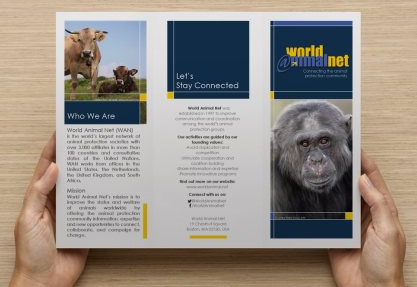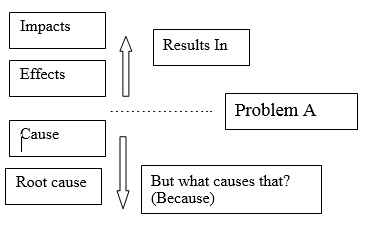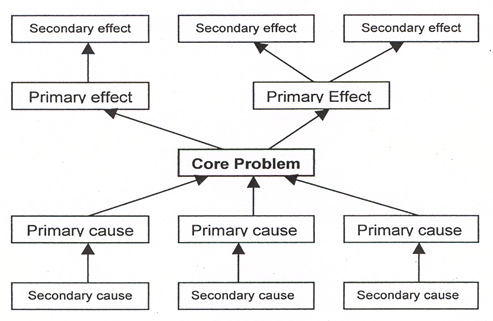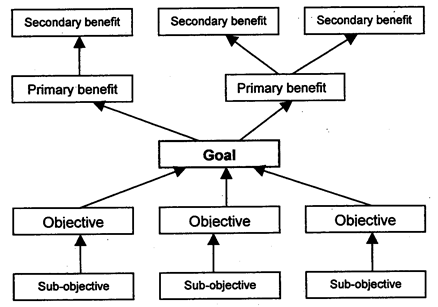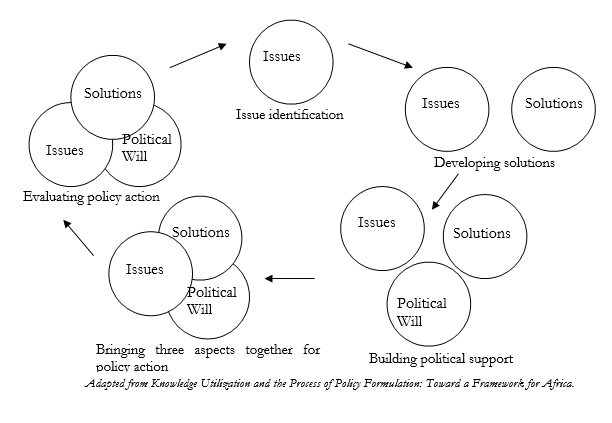
Uncategorised (32)
WAN's volunteer team has been crucial in updating and enhancing the WAN Directory of Animal Protection Organizations, and we are happy to recognize the contributions that each volunteer, both past and current, has made towards this goal. To our volunteers- THANK YOU! We could not do it without you.
If you are interested in becoming a WAN volunteer, please visit our volunteer information page.
Current Volunteers
 Bettina Strehle
Bettina Strehle
Germany
Since April 2014, Bettina has worked on updating the listings of German-speaking countries, including Austria and Germany.
Noopur Pathak
Burlington, Massachusetts, USA
Since August, 2014, Noopur has helped in fixing broken links in the Directory and has assisted in MySQL coding needs.
Past Volunteers
Abhishek Naik
SUNY College at Old Westbury - Old Westbury, New York, USA
Abhishek helped to fix broken links in the Directory.
Alexis Guida
Bridgewater State University - Bridgewater, Massachusetts, USA
Alexis helped to fix broken links in the Directory.
Janine Slaker
Lansing, Michigan, USA
Janine helped to fix broken links in the Directory.
Rhonda Lechten
Boston, Massachusetts, USA
Rhonda helped to correct bounced email addresses and made updates for a number of Australian organizations.
 Thành Nguyen
Thành Nguyen
University of Massachussetts, Boston - Dorchester, Massachusetts, USA
Thành helped to research and update all Vietnamese listings in the Directory. Thành is currently a sophomore biochemistry major at Umass Boston. He is interested in animals and working hands on with them, both domestic and wild and especially those belonging to the canine and feline families.
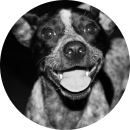 Trudi Gopie
Trudi Gopie
Boston, Massachusetts, USA
Trudi helped to fix broken links in the Directory. Pets have always been a part of Trudi's life. She currently owns two little rescue pups that make her life that much sweeter each day.
 Zane Gavin
Zane Gavin
Northeastern University - Boston, Massachusetts, USA
Zane helped to fix broken links in the Directory. Zane is a mechanical engineering major who is passionate about domestic animal protection and knows that making a small change and putting in a little effort can have tremendous impact. Even if not studying directly, Zane hopes to make as big of a splash in the field of international animal protection as possible.
Past Interns
Julie Fields
Dickinson College - Carlisle, Pennsylvania, USA
Julie updated all Canadian organizations in the directory, and conducted a self-directed policy analysis of the Canadian ban on gestation crates and the dangers of livestock boards and similar policy structures for animal protection.
 Petra Solarik
Petra Solarik
Wheaton College - Norton, Massachusetts, USA
Petra updated all Middle Eastern listings in the Directory, and conducted a self-directed comparative analysis of animal protection and welfare policies in selected Middle Eastern countries. She is a biology major with a particular interest in animal rehabilitation and wildlife rescue projects. Both wildlife and domestic animal issues interest her and so she hopes to use her education and experiences to make a small change in the ever growing field of animal protection.
The World Animal Net International Directory of Animal Protection Organizations

History
In 1986 World Animal Net president and co-founder Wim DeKok began compiling information on the organizations working for animal protection around the world. Eventually, this work led to the publishing of the World Animal Net International Directory of Animal Protection Organizations. The directory garnered many accolades and, for the first time ever, allowed organizations to search for and contact peers working on similar issues on the other side of the world.
As the internet became more accessible around the world, the hardcopy directory was eventually replaced with the online version. The online version is not only more ecologically-friendly, but also brings the significant benefit of allowing anyone from anywhere in the world to search the directory at no cost.
Today, the directory has become an invaluable tool to both individuals and organizations working in animal protection worldwide. Individuals who wish to report animal cruelty and neglect witnessed in their communities or abroad can search the directory for the appropriate local organizations to notify. Organizations frequently use the directory to reach out to fellow animal protection groups to form collaborations, garner support, and spread awareness for new initiatives.
Maintenance
The directory is maintained by a team of dedicated volunteers who work closely with WAN staff to ensure that the information in the directory is up to date and accurate. With 17,000 organizations in over 130 countries, maintenance is no small feat.
Directory Users
As a directory user, you play an important role in helping us maintain the directory listings. If you find that there is inaccurate information, questionable listings, or missing organizations, please let us know! It is only through constant assessment of the directory that we can ensure the quality of the information. You can report a problem by following the "read more" link in a directory listing, or by using our general contact form.
Organizations
If you are the representative of an animal protection organization, we encourage you to check your organization’s listing and ensure that the information we have is accurate. You can do so by logging in using the portal on the right. If you cannot remember your login information, please contact us directly.
If you do not see your organization listed, please take a moment to register. We will review your organization’s information prior to publishing it in the directory.
Organizations Listed
Organizations included in the directory encompass a wide range of philosophical viewpoints and methods of action. This means that organizations ranging from those conducting pet rescue, promoting vegan or vegetarian eating, and even certain environmental groups are included in the directory. The common denominator of all groups is that animal protection must be a component of the organization’s work.
While a handful of zoos may meet this criteria, we do not list any organization that raises animals for food or fiber, or breeds animals for personal gain. We also do not list individuals, such as veterinarians, in the directory.
Please note that the inclusion of any group in the directory should not be taken as a recommendation of its aims, policies or methods.
Download a PDF of the briefing
Summary
The root causes of conflict and violence need to be examined, and educational programs developed to deal with these at the root. There are existing ‘tried and tested’ educational programs available, including humane education – which creates a culture of empathy and caring by stimulating the moral development of individuals to form a compassionate, responsible and just society.
Background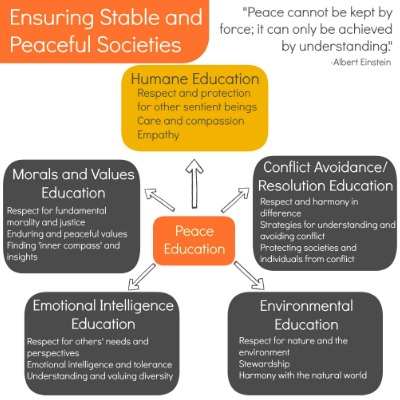
Key Sources of Conflict
The concept note refers to the increase of conflict and violence in societies. This is scarcely surprising, given the current focus, priorities and direction of many societies across the world. We are becoming more materialistic, more individualistic and selfish, and increasingly driven by the quest for worldly success and prosperity. Growth of economies and acquisitive personal aspirations lead to conflicts over scarce resources. Lack of equity can also contribute to conflict … but even this would not be a problem if these was a spirit of interconnectedness and giving in society. But our priorities and values are changing – mostly to the detriment of wisdom, compassion and – ultimately - our own happiness. We increasingly communicate through trite, short-hand phrases, adopting and justifying ideologies, instead of developing our own insights and wisdom. Soul-searching and personal development are no longer prioritized, as conformity is easier and more likely to gain peer acceptance.
Importantly, we are also becoming more urbanized, and losing our deep connection to nature and animals – and often to our human support systems (our families and communities).
Working at the Root
Peace will not be achieved by patchwork reforms. The development of peace has to begin with understanding ourselves and the nature of the world we live in.
We humans have a built in code in our DNA that speaks to us of right and wrong. Our duty to our learners is to assist them to reach inside and interpret this code, so its guidance can be used when they are faced with hard decisions and difficult situations. The wisdom they are developing will affect their character, values, and morality. Values that come from the heart provide a foundation of strength and goodness that lasts a lifetime, and can be brought into play whenever new challenges arise. In our new fast-moving world, the development of wisdom is crucial.
Conventional education is the transfer of knowledge to pass examinations and – sometimes – to gain employment. This is significantly lacking for the development of the whole human. In many ‘developing’ countries, education is still by rote, passing on formulaic learning with no development of insights, intelligence and values. In such cases, Universal Primary Education is of little value in providing much-needed life skills?
World Animal Net strongly advocates the educational approach for the development of peaceful societies, working at the root of the problem for sustainable change.
Humane Education
Humane education is one tried and tested educational approach which could be used for this purpose. It is defined as:
“A process that encourages an understanding of the need for compassion and respect for people, animals and the environment and recognizes the interdependence of all living things”.1
The aim of humane education is to create a culture of empathy and caring by stimulating the moral development of individuals to form a compassionate, responsible and just society. It is a means of introducing children to the reactions and emotions of animals, as well as linking this to an understanding of environmental issues and ecosystems. It has the potential to change hearts and minds – and ultimately our society.
There is a well-documented correlation between childhood cruelty to animals and later violence and criminality. Humane education is needed to develop an enlightened society that has empathy and respect for life, thus breaking the cycle of abuse.
The following claims were made for humane education by the US National Parent-Teacher Association Congress in 1933:
"Children trained to extend justice, kindness, and mercy to animals become more just, kind and considerate in their relations to one another. Character training along these lines in youths will result in men and women of broader sympathies; more humane, more law-abiding - in every respect more valuable - citizens. Humane education is the teaching in schools and colleges of the nations the principles of justice, goodwill, and humanity towards all life. The cultivation of the spirit of kindness to animals is but the starting point toward that larger humanity that includes one's fellow of every race and clime. A generation of people trained in these principles will solve their international difficulties as neighbors and not as enemies."
Humane education is the building block of a humane and ethically responsible society. When educators carry out this process using successfully tried and tested methods, what they do for learners is to:
- Help them to develop a personal understanding of ‘who they are’ – recognizing their own special skills, talents, abilities and fostering in them a sense of self-worth.
- Help them to develop a deep feeling for animals, the environment and other people, based on empathy, understanding and respect.
- Help them to develop their own personal beliefs and values, based on wisdom, justice, and compassion.
- Foster a sense of responsibility that makes them want to affirm and to act upon their personal beliefs.
In essence, it sets learners upon a valuable life path, based on firm moral values.
Through humane education, teachers are able to reach into the hearts of learners, begin by kindling their natural interest in animals, and move towards developing a mind-set of empathy, care and respect for all life. Rekindling the spirit of care and respect for life, learners find a new sense of self-esteem and confidence.
"Empathy is the most valuable social resource in our world. It is puzzling that in school or parenting curricula empathy figures hardly at all, and in politics, business, the courts, or policing, it is rarely, if ever, on the agenda. The erosion of empathy is a critical global issue of our time."Simon Baron-Cohen, Professor of Developmental Psychopathology at the University of Cambridge, UK
Research has shown that humane education has a wide range of positive social and educational outcomes. The empathy generated extends to people of a different gender, ethnic group, race, culture or nation. It is also a sound investment - working on the prevention of criminality and antisocial behavior, which can have a massive societal cost, both in terms of reduction in 'quality of life' and in financial costs incurred through criminal damage, maintenance of law enforcement systems, court costs, prison systems and juvenile work.
“As a teacher with 30 years of experience, I do not believe that we can solve violence in our society with high fences and razor wire. If we are to fight violence effectively and uplift our communities for a sustainable future, we will have to reach into the hearts of learners and develop that vital quality called 'empathy'.”Cape Town school teacher, Vivienne Rutgers
World Animal Net believes that humane education should be an essential part of a student’s education as it reduces violence and builds moral character. It can also play a significant role in the development of stable, caring and peaceful societies.
There are also other educational initiatives that could help, including peace education and values education.
Human Trafficking and the Illegal Wildlife Trade
The concept note makes specific mention of the illegal trade in wildlife, in the same vein as human trafficking, – pointing to both as ‘external stresses’. As an animal welfare organization, World Animal Net is greatly concerned about the illegal wildlife trade. However, we feel that these are probably both symptomatic of the wider problem in current society: the erosion of values and respect for human life, and the prioritization of economic gains and acquisition (i.e. an effect, rather than a cause).
Call to Action
World Animal Net urges the inclusion of humane education, and peace education more broadly, in the post-2015 development agenda, as a sustainable intervention towards the development of stable, caring and peaceful societies.
This work could be coordinated and examined, to include all tried and tested educational initiatives (including: peace education, humane education, environmental education and values education) in the search for integrated educational solutions. Programs could then be developed and piloted, using best practice, evaluated and subsequently rolled out with the support of donors and development partners.
1See CARA Welfare Phillipines, Humane Education, (last visited, Mar. 28, 2014).

World Animal Net has a brand new brochure! Download to read more about our work and programs.
Download the PDF

Category:
A primary tool (either this or a fishbone diagram)
Description and Purpose:
This is a visual mapping tool for synthesizing and visualizing the results of research and analysis on a specific issue. It helps to dissect a problem, to establish root causes (which aids the design of effective and targeted interventions) and effects.
Method:
This visual mapping tool is similar to a Fishbone Diagram (see note below). It is useful after problem identification to place issues in their wider context, and clarify that the issue under question is the real problem, not a symptom of a different problem.
This tool is ideally suited to group work – with colleagues, partner organizations, or a coalition. A facilitator can aid the group. To start the diagram or tree, generate the causes and effects on Post-it notes and stick them onto a large piece of paper.
Ask ‘but why’ or ‘what causes that?’ at each stage when seeking root cause.
Ask ‘what happened’ or ‘what does that lead to’ at each stage when seeking final impact.
It is effective when done using ‘post it’ slips, as these can be moved around as the process unfolds e.g. when causes are later identified as root causes.
Diagrammatically, the mapping can unfold as follows:
This can also be designed as a problem tree. The tree has a trunk that represents the core problem, roots that represent the causes of the problem, and branches that represent the effects.
In considering problem causes, do not forget to include the policy environment and whether new policies are necessary or whether existing policies are being implemented effectively.
Next, the effects of the problem are drawn (as branches of the tree). Once again, the diagram should identify links between issues by joining branches together. Find out what people know about each root cause and each effect of the problem. Details and reasons may reveal further causes and effects.
The group can then negotiate the relationships between the cards and how they should be placed. The diagram or tree can be re-framed by making one of the causes or effects as the core problem, and re-adjusting the other cards around it. You may want to do this to refocus your issue to one that you can better influence.
You can then use the diagram or problem tree to produce a solution tree, where the trunk is your main aim, the roots are objectives and the branches are the benefits that will arise from your aim being met.
You reverse the core problem to create a goal (or aim) (cover the card with a new one with the goal written on it). Similarly you convert the effects to benefits, and causes to objectives – simply by reversing the language used.
At this stage, you should not leap ahead into how the objectives might be achieved. For example, if one of the ‘causes’ was ‘lack of understanding’, your ‘objective’ should be ‘increased understanding’, not to institute an education program – there may be other methods of achieving the objective that you will want to consider at a later stage in the planning process.
The objectives do not all have to be advocacy objectives. They can also be objectives that are best met through other types of animal welfare work. Using this technique can enable you to devise an integrated strategy of projects and advocacy, both being part of your wider program. The advocacy objectives will not necessarily fall in the first line next to the goal – these may be quite broad and the most focused objective needed for advocacy may be on the second row.
In the course of doing the problem and solution trees, you may realize that there are gaps in your knowledge that need further research. That is fine, and is another benefit of using a tool such as this for your analysis.
The effects and benefits you produce are important, as they are going to form the basis of your compelling argument that brings you more support and eventually persuades the policy maker to change their position.
The objectives you arrive at are important because they may provide a basis for your project or wider program.

Category:
A primary tool (but feel free to adapt content to suit your purposes)
Description and Purpose:
This is a tool for analyzing the best choice of advocacy issue. It works by rating each issue against given criteria.
Method:
Apply a rating to each issue for each criterion – using a positive ranking of 1-5 (with 5 being the maximum).
Adapt according to your organization’s priorities and needs (e.g. add fundraising potential; media potential etc.). Consider changing rankings to reflect major priorities (e.g. give double point to likelihood of success, potential benefits and potential for your organization to make an impact).
| Criteria | Policy Issue 1 | Policy issue 2 | Policy issue 3 |
| Likelihood of success | |||
| Potential benefits for animal welfare |
|||
| Potential for you to make a difference (or is the bus overcrowded?) |
|||
| Relevance to your work and objectives? |
|||
| Potential for networking and coalitions (i.e. relationship with the relevant allies is strong) |
|||
| Possibility to use the advocacy for capacity- building |
|||
| The issue is something you care passionately about (this is important as it will motivate you to take action on the issue? |
|||
| TOTAL |
This can be amended according to your own criteria (and perceived level of importance). As with all tools, it is simply for guidance, and should be adapted where necessary to achieve the most relevant results for your organization. For example, although it is generally accepted that you should try to make the most difference to the welfare of animals through your choice, if this is your first advocacy initiative you may want to start with a small, limited-time advocacy issue – to build aptitude and confidence.

Selecting a Policy Issue
Problem Causes and Impacts
Issue Solutions
Selecting a Policy Issue
There are many ways in which an advocacy issue can be selected reactively, including:
- You keep being faced with a particular animal welfare problem, which the authorities fail to resolve
- You face particular barriers to your animal welfare work which you feel could be overcome through targeted advocacy
- Animal welfare activities that you are involved with may have resulted in successes that could be replicated more widely. Advocacy may help in sharing that experience and ‘scaling up’ the impact of the work
- Institutions and organizations whose policies and practices affect the welfare of animals may announce new proposals or start new activities that need to be responded to – either by resisting or modifying these proposals or activities
- Opportunities for other changes may arise – perhaps because an issue becomes more widely discussed in the media, or because an international conference on that issue is scheduled.
A proactive approach can also be taken to the development of advocacy issues. This will usually be initiated by research and analysis. This could be decided on during strategic planning for your organization, or as part of a review of its existing programs on certain issues. Both of these should include the identification of major development trends, and research and analysis of the policy environment to ascertain whether policies and implementation are successfully meeting animal welfare needs. When an advocacy issue is identified in this way, it can be meaningfully integrated into program work, and strategically used as a tool to achieve program objectives.
The number of advocacy issues it is possible to tackle will depend on your organizational and personal resources. It is generally advisable to focus your work on only as many objectives as you can realistically achieve (which may be just one for smaller organizations). Advocates who attempt to fix everything run the risk of changing nothing in the process.
This means that advocacy issues need to be chosen carefully. However the advocacy issue arises, it is recommended that any decisions on the most appropriate advocacy initiatives are preceded by full research and analysis. Without this overview, it is impossible to determine which advocacy approach is likely to lead to the most effective outcome for the issue (in terms of sustainable change).
|
Advocacy Tool Tool 1. The Issue Choice Matrix |
In making your choice of advocacy issue, do not forget that:
- The issue must be of relevance to your organizations broader strategy.
- The issue should be something you care passionately about and want to advocate on (as this will motivate your work).
- You need to carry out a risk analysis to ensure that your choice of issue will not bring harm to your organization (or that the envisaged benefits far outweigh any risk of harm).
Problem Causes and Impacts
Once you have identified your main issue you need to identify the causes and impacts of the problem.
|
Advocacy Tool Tool 2. Causal Mapping or Problem Tree Analysis |
|
Caution! Whilst the problem tree can be a useful tool it also has negative connotations, because it focuses on problems, rather than looking at solutions. You may wish to also use idea-generating approaches. ‘Appreciative Inquiry’ methods, examine past successes and achievements, with a view to replicating or improving on these. Combine with other tools to generate new and creative ideas. |
Issue Solutions
The process of developing and implementing advocacy solution for your issue can be seen in the following diagram:
In brief, this works as follows:
- Begin by identifying your issue (see above)
- Carry out extensive research and analysis on your issue to develop clear and practical solutions, including problem analysis and stakeholder analysis.
- Work to build political support for your policy change solutions
- Use political support to push through solutions
- Evaluate the policy action taken, and identify new or unresolved issues.
Once you have mapped out the problems, by using the problem tree, you will want to make sure your report ‘comes alive’ for the reader. Your research report should include case studies relevant to your issue and target audience.
|
Advocacy Tool Tool 3. Research Case Studies |
More...

World Animal Net currently has the following openings:
Database Maintenance Volunteer (Ongoing)
Help animals around the world by volunteering for them from Boston! World Animal Net seeks volunteers to assist in the maintenance of the World Animal Net Directory, which contains the name, address, website, email, and social media information of over 17,000 animal protection organizations around the world. The goal of the directory is to facilitate communication and collaboration between the world's animal protection groups.
Responsibilities:
- Verify existing listings
- Make updates to listings where needed
- Identify and add new animal protection groups to the directory
- Communicate with animal protection organizations as needed to retrieve necessary information for database
Qualifications
- Basic computer skills
- Basic knowledge of Internet search engine use
- Basic communication skills
- An interest in database management and maintenance and/or improving the status and welfare of animals
Time Commitment and Location
- 5+ hours per week, 10+ hours per week preferred
- Would require some in-office hours initially for training, but could shift to work from home if that is preferred by the volunteer
- The World Animal Net Boston office is easily accessible from all subway lines (Green and Red from Park St. Station and Orange and Blue from State St. Station)
If interested please contact us at info@worldanimal.net
Footer
External Link

Take the Tour
Directory
Our Directory provides contact information, and, where applicable, email, website and social media links for over 17,000 animal protection organizations. You can search this directory by organization name, area of focus, or location.
Don't see your organization listed or find information that is outdated? Help us maintain the quality of our Directory by Registering Your Organization, logging in to update your listing (using the button on the right of the footer), or Contacting Us with any other updates.
Events
The Events calendar is a new and expanding section of the website where we list past and upcoming animal protection events, from film premiers and festivals to professional or academic conferences happening around the world.
Does your organization have an upcoming event you would like to see listed? Let us know by Registering an Event. We will be happy to help you publicize your event on our calendar!
Resources
Our Resources section is divided into nine different topics, including Animal Protection Law, Society Management, and overviews of various Animal Welfare Issues. You can start exploring these resources from our new and improved Resources Index which gives a brief description of each topic.
Jobs and Volunteering
Our Jobs and Volunteering pages have long been a popular destination for those seeking employment, volunteer, or intern opportunities in animal protection.
About Us
Finally, our About Us section will tell you a little bit more about WAN, our history, mission, and who works behind the scenes to provide these resources free of charge!
Responsive Design
Our new website is now also compatible with smart phones, tablets and other handheld devices, so you can take us with you wherever you need to go!
Keep in Touch
Let us know what you think about the new site! We would love to hear from you. You can also find us on Facebook or Twitter, where you can stay updated about animal protection issues, upcoming events, and WAN's work.
We look forward to seeing you there.
Best,



